Builder.ai makes building an app easy and simple for entrepreneurs. We have worked with all manner of businesspeople looking to launch their ideas through innovative app development and creation, and we’ve been a part of some incredible journeys and some of the most revolutionary apps. Over time, our team of experts has learned a tip or two on how to approach app development from an entrepreneurial perspective.
If you’re an entrepreneur and you’re thinking about creating a mobile app, here are 15 app development tips you need to know before commencing your journey.
#1 Cement your app development idea early on
It might sound like a really obvious step to finalise the concept of your app before you start thinking about anything else. But you’d be surprised at the number of people who choose to create an app without a concrete idea in mind.
We know that apps can be incredibly prosperous and the revenue they can potentially bring to your business makes them well worth the investment, but don’t just make an app for the sake of it. As an entrepreneur, there will be basic steps that you feel like you need to take to keep up with those around you i.e. your competitors. While it’s important to cover all major bases, something like developing an app can’t be half-baked.
If you don’t have a proper idea in mind, it’ll show. When your business is in its early stages, try and get everything as correct as possible. Mistakes will be made, but making an app is not a throwaway investment. When executed properly, it has the potential to launch you out the gate and propel you ahead of everyone else. When done poorly, it’ll have the opposite effect.
The number of people browsing the app store is growing every day, so the potential brand exposure for your app is huge. The last thing you want is for people to stumble across your app and wonder what the point in it is. This will give the impression that your brand is unsorted and unprofessional. Once you’ve made that first impression, it’s hard to go back.
The most common reasons people make an app include, to:
- Sell their products directly on mobile devices with ease
- Make it easier for customers to access support and help
- Provide entertainment or exclusive content to encourage brand loyalty
- Give customers rewards as a sign of gratitude
If you’re struggling to identify which category your app falls into and are veering towards making an app for the sake of it, don’t.
As an entrepreneur, you must show people the very best you have to offer right off the bat. Sure, your app will need tweaks over time, and it will no doubt undergo some refining, but at the very least, make your intentions clear. This will mark you out to competitors, but it will also highlight to users what your app can do for them.
#2 Set out an approximate timeline
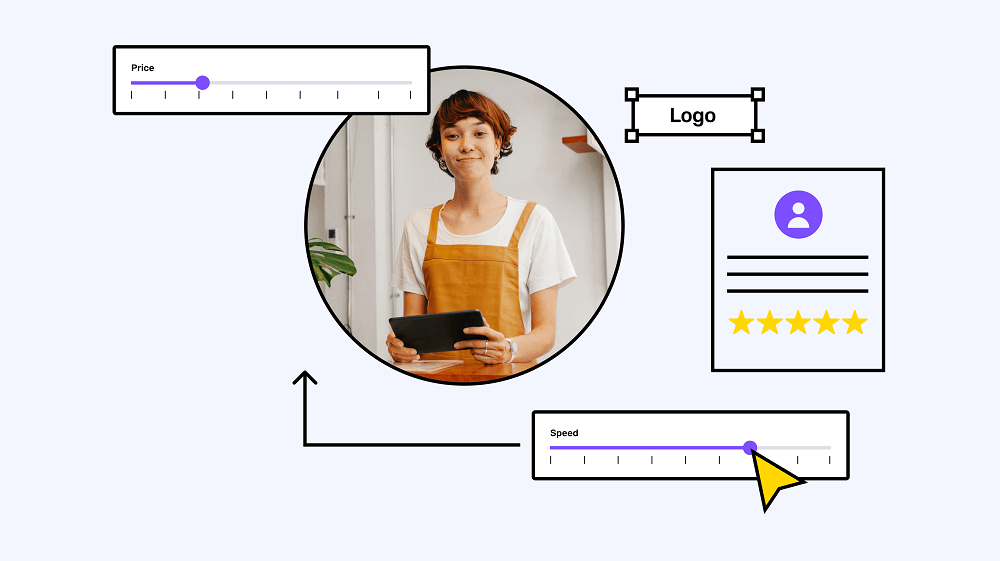
The path to success rarely runs smoothly, and Rome wasn’t built in a day. You can't argue with the cliches in this case – miracles don’t happen overnight. As an entrepreneur, you’ll know this more than most. We’re willing to bet that your business idea is the result of years of hard work.
While using an app builder like Builder.ai means you can drastically cut your app design (we're 6x faster than traditional app builders), it isn’t the only part of your app development journey. There are so many more stages pre-app build that you need to consider. So much so, that the actual build will likely be the shortest part of the whole process!
If your competitor has an app out and it seems to be doing well in terms of numbers, you’ll probably be tempted to try and create your own app in as short a time as possible. This isn’t a good idea. You need to set out an approximate (and realistic) timeline. This should include everything from initial conception through to launch.
Generally, most companies can get an app up and running in nine months or so. Some do it quicker, some do it slower. There’s no real rush because it’s better to take your time and produce something great than to rush the process and release something that doesn’t reflect the true quality of your company.
That being said, building an app doesn’t need to take years. We know the life of an entrepreneur is a busy one, but setting an approximate timeline will do you wonders in terms of holding you to account to meet deadlines and milestones along the way. Check your diary and make sure the timeline you’re setting is realistic. Most importantly, try your hardest to stick to it.
If you don’t, you risk starting a project that will seemingly go on forever and that becomes a thorn in your side rather than a fun adventure that you can benefit from.
#3 Spend extensive resources on market research
We can’t stress enough how important extensive market research is. If done correctly, the research portion of your app development journey will take longer than all other aspects of the project. We know that as an entrepreneur, you’ll know your customer base well enough, but if you’re just starting out, there might still be some learning left to do.
The first step of your market research should revolve around finding out if there is a gap in the market for your app. If you’re thinking about releasing a game but there is already a market leader and several other copycats, it’s likely not worth your time. On the other hand, if you have a productivity or ecommerce app idea, there is always room in the market for you provided you have a USP.
It could be loyalty points that quickly add up every time the app is used for a purchase, it could be exclusive offers only available to app users, or it could be a cool feature like a virtual try-on assistant. Whatever it is, make sure your app has something your competitors don’t.
In some industries like Oil & Gas, Automotive, Wine, Education, Healthcare, Fintech, hospitality, Construction and Logistics that can be easier said than done; however, it isn’t game over. Reserve time to research your competitors, use their apps and make a note of all the good points and all the bad points. Read customer reviews and see if there are any user experience issues that should be avoided. Use this information as a basis for your app. Essentially, you need to make sure that what you’re doing is better than what everyone else is doing. And the only way to do that is through research.
Another important thing you need to factor into your research is what the market is looking like. Are your prospective customers likely to use an app? If so, what platform are they most active on? Do they prefer the idea of a free or paid app?
A combination of all this data will leave you with a more polished and refined plan of action, and one that you can feel confident in moving forwards. As the saying goes, if you fail to prepare, prepare to fail.
#4 Choose your operating system at the beginning
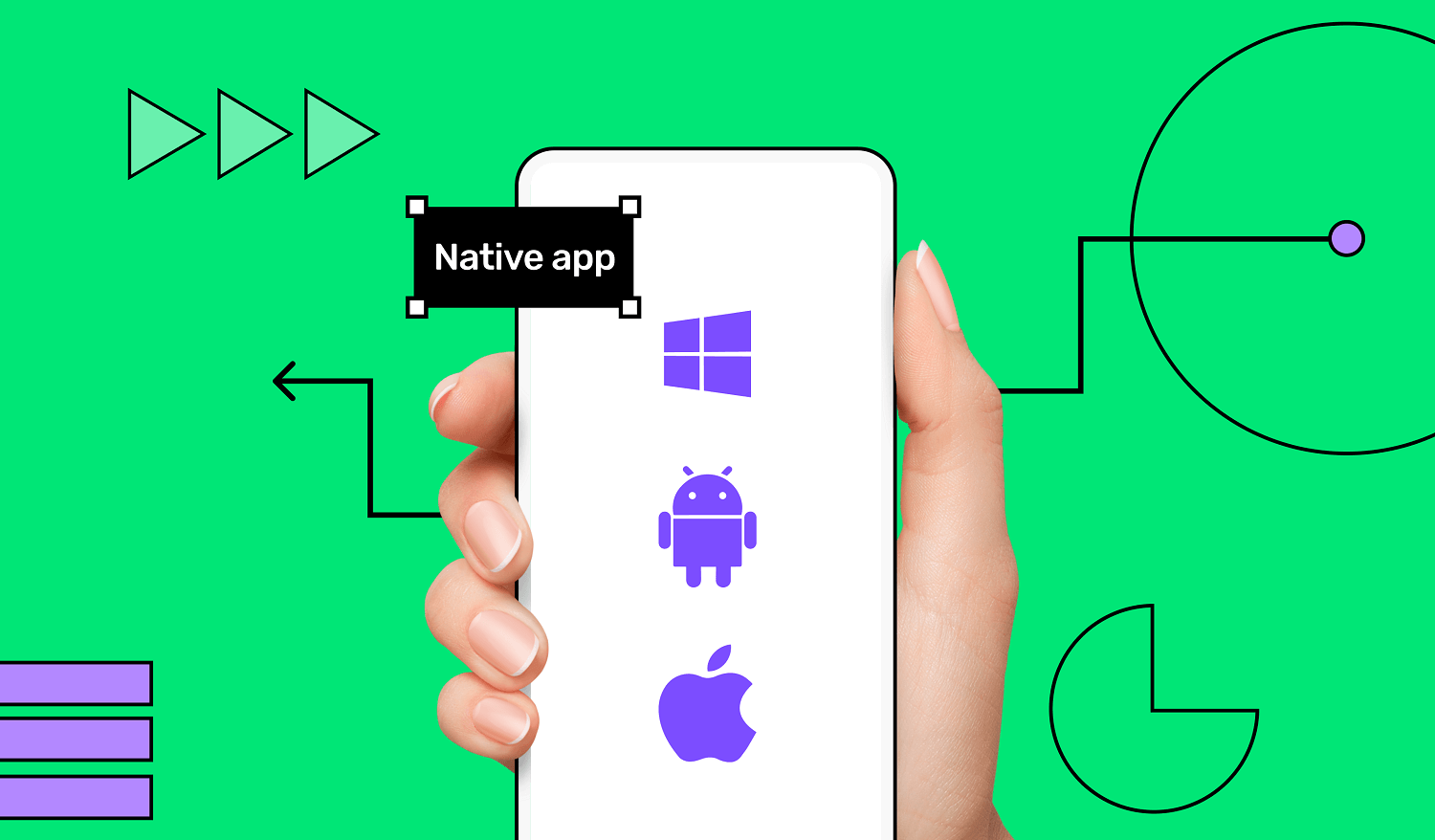
We’ve briefly touched upon identifying the platform your prospective customers are most active on, and that’s important because it will determine how your app is written. Apps are more than the front interface – they’re code. App builders take all the hassle of the build away from you because they use pre-determined templates that have already been coded, but you still need to make it clear which platform you’ll be launching your app on.
Apple is often credited with bringing apps to the forefront and making them what they are today through their App Store, but in recent years, Android has taken a 73%share of the mobile market through its Google Play store.
We all know that Apple and Android have their differences, and most of them are noticeable, but the one that isn’t is among the most important. Apple and Android use different scripts for their software. This means Apple apps are written in code called Swift, and Android apps are written in code called Java.
You can't build one app in one programming language and hope it'll perform on both platforms. It simply won’t work. The last thing you want is for your app to look glitchy or perform badly on either type of device, be it Apple or Android.
Once you know what platform your target audience is most likely to use, you can decide on what type of code you’re going to build your app in. There are Android and Apple-specific app builders respectively, and some can do both. If you want to target both app stores, you will need to build the same app on two different types of code, ensuring both versions function the same for uniformity purposes.
#5 Prioritise features over the design to start with
As an entrepreneur, you’ll likely be extremely focused on your brand and its subsequent branding, but when you decide to build an app, put the design to the back of your mind – at least in the beginning.
Designs change all the time, and while the way an app looks is integral to users deciding to keep it installed or leave it a bad review, function should always come over form. If something works incredibly well and has a faultless user interface but it looks a bit clunky or undesirable, it’s something people can live with. In fact, most people will stick it out to see the glow app subsequent versions of an app go through.
On the flip side, if an app doesn’t perform well but looks incredible, it won’t be a hit and it will fare worse than the ugly yet practical version. Looks can be fixed, but features are harder to amend. With this in mind, make sure you’re prioritising features over design.
If you have everything your customers will want in terms of usability and functionality, you can always make it look better afterwards. Provided you’ve done adequate market research, you should be able to easily identify which features will be most appreciated. While there are good and bad designs, the latter can be forgiven in respect to something that might not look great but that out-performs every other app in its sector.
#6 Research your platform thoroughly
We’ve already briefly touched upon how Apple and Android have different operating systems and use different code, but there is more to it than that. Both types of app stores have their own requirements for apps and marketing apps. For example, Apple allows you to add keywords into your app listing, but Android doesn’t.
App store optimisation (ASO) is the process of tailoring your app listing to perform better on the charts. The only way you can do that is to research the platform you intend on promoting your app extensively from the get-go.
You could have the perfect app – something truly revolutionary – but if you don’t follow app store guidelines or fail to optimise your listing appropriately, it will simply get lost in the pit of thousands of apps that go live every single day.
#7 Think about what users want
It’s easy to think about what you want in an app, e.g. to boost your brand growth, to increase sales, to engage customers, or to encourage customer loyalty, but it’s not quite so easy to put yourself in the place of your customers.
Perhaps the biggest tip we can offer you is to think like a customer. Entrepreneurs typically set out to offer solutions to a problem, and this is often born out of a problem they have once faced themselves. If this is you, go back to the problem you wanted to solve and why you wanted to solve it. If you’re struggling, think about how you use other apps.
What do you expect when you use an app? It’s likely to be easy navigation, clear instructions, a defined user journey and something that is responsive. Pair this with your market research which should have included an open-ended question surrounding what users potentially want or expect from an app, and you’ll no doubt have a product that works.
Don’t make the mistake of assuming anything. If you’re ever in doubt, ask your customers directly. Put out a poll on social media, speak to them face-to-face, send out a newsletter. Do whatever you need to in order to get in the head of your customer and provide them with an effective solution that they’ll appreciate.
#8 Research user interface/experience features
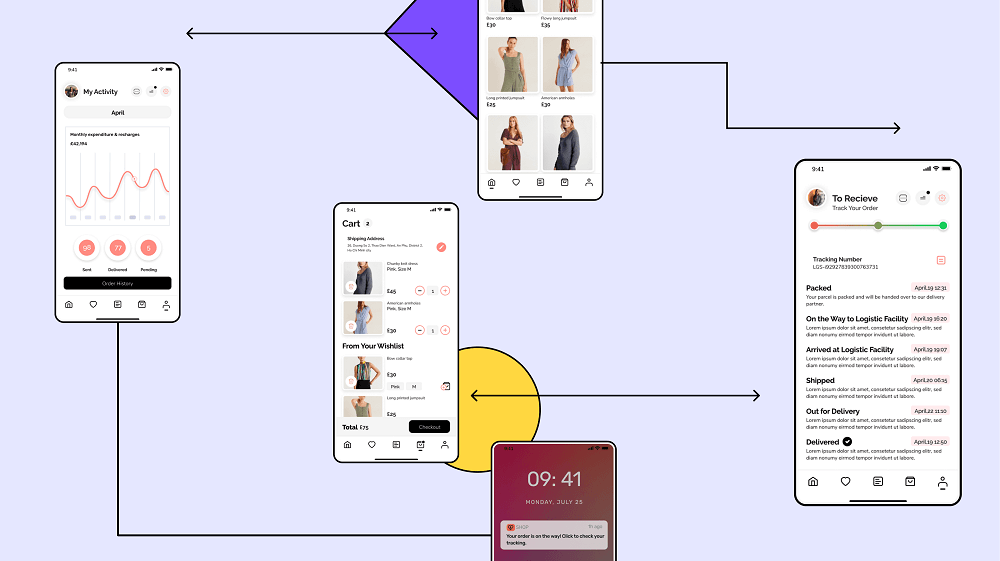
Just because you like a design, it doesn’t mean it’s a good option. We’ve all seen brands that have launched campaigns that have been led purely on aesthetics. When there is no investment into user interface or experience (UI/UX), it shows.
There are certain rules you should follow, such as ensuring all the content is readable, and that each navigation bar is easily accessible. You should also try and avoid a never-ending scroll on your app, as well as a tiny typeface that requires users to both squint and zoom in to see.
Builder.ai’s app packages include pre-determined designs that have been extensively tested to ensure they follow UI/UX best practices, but if you’re looking into building an app from scratch, make sure to research standard rules that apply.
#9 Conduct A/B testing and get all the feedback you can
The first version of your app will not be the final version that eventually goes live, nor will it be. Ideally, you will have reserved enough time to make two prototypes with minor tweaks in their features (e.g. font style, colour combinations and imagery).
When you have your prototypes, you should employ the help of a focus group to give you honest feedback and to tell you what features and design elements work the best. Don’t be defensive and don’t take it personally – but do listen to what they’re saying and implement changes where necessary.
#10 Consider complete brand integration
Unless you’re a mobile game developer, you will almost certainly have a website or an online presence of some description if you’re thinking about building an app. For ease of use, you should consider brand integration. Some app developers are standalone tools, but others allow you to easily see data from all your platforms, including your website so that you can keep an eye on everything that is happening on all platforms.
We’ve already acknowledged how busy entrepreneurs are, so having the ability to keep everything related to your brand’s digital presence easily accessible in one place makes perfect sense.
#11 Choose a platform to build your app on
This is potentially one of the biggest things you need to keep in mind when creating an app. You might be under the impression that all app builders are built the same – this isn’t true. Some specialise in Android or Apple-specific apps, others specialise in games or ecommerce apps.
There are so many different types of packages available, meaning you need to sit down and put some serious thought into the platform you decide to go with. Your budget will no doubt play a role, but so will the type of app and the design features you’re looking for. That’s not to mention how easy you find it to use the software.
Some app builders are designed with complete novices in mind, others are aimed at those with more technical experience. Use the free demos available to try and figure out which platform offers the best value for money and is the easiest to use, all the while keeping design in your mind and how long it will take the platform to launch your app for you.
Want to start your app project with us?
Book a demoSpeak with one of our product experts today.
By proceeding you agree to Builder.ai’s privacy policy and terms and conditions

#12 Keep security and data protection laws in mind
If you’re an iPhone user, you’ll be accustomed to the pop up that flashes up every time you download a new app. It asks if you feel comfortable with the app tracking your data across other apps and mobile platforms, and you can answer either yes or no.
This gives users the option to have their data tracked or not, and it’s something you need to keep in mind, especially if you want to launch on the app store. We would recommend brushing up on your GDPR and data protection knowledge, especially if your app will be tracking data.
#13 Check your app meets its USP
In all the fun of the design and build, it’s easy to lose sight of the main goal; your USP. At this stage in the app development process, double-check that your USP is still intact. As mentioned before, an app that has no clear guidance or purpose will not perform well, so make sure you are aware of your main selling point and that your app prototype reflects your initial goals.
#14 Extensively test prototypes
Speaking of goals, make sure you put your prototypes through the wringer. Get as many people to test them as you can, including your team, your friends, your family, your customers and even strangers.
The more testing you do, the more likely you are to spot bugs and fix issues. Once an app has gone live, it’s a lot harder to make changes because users will need to download a new version inclusive of updated features. You can avoid the struggle by taking at least a week or two to really put your app to the test, again collecting feedback and taking it into account.
#15 Put some thought into the launch
You might think that all the hard work is done by the time you get to the launch, but this couldn’t be further from the truth. Launching a product is a high-stress time for every entrepreneur, especially after months of work have gone into something, but there’s more to the launch than the app’s reception.
Think logically about the day you want to launch on. A big event such as a national holiday probably isn’t the best idea, nor is the weekend if your team are off and no one is available to fix a problem for two days.
Choose a regular day and perhaps don’t shout about things too much just yet – soft launches are good. When you’re out the gate, you can start implementing your marketing campaign to drive traffic to your app and to encourage downloads.
Get building today!
Here are Builder.ai, we love working with entrepreneurs and watching their ideas become a reality. If you’re an entrepreneur looking to build an app and begin your app development journey, we can help.
Alternatively, take a look at some of our previous projects before you commence your project.
FAQs
How do mobile apps make money?
There are several ways a mobile app can make money. They can do so by charging to download the app, by offering in-app purchases, or by generating money through adverts and in-app content from third parties.
How mobile app is developed?
Lots of people choose to develop their apps using app builders because the process is often faster, cheaper, and more convenient as you can do it yourself. Once you have an idea and have completed the relevant market research, you can easily build a prototype.
How does mobile app development work?
There are six main steps to mobile app development: planning, research, design, build, test, and launch. Mobile app builders like Builder.ai take all the hassle out of designing and building your app, making the development process easier, more accessible, and shortening the time between the build and the launch.
Why is a mobile app important?
We all know the world is moving increasingly online, and while internet shopping is continually growing, mobile shopping and purchases are growing even more. The average person checks an app on their phone 50+ times a day, and they download up to 30 more every month. They’re fast becoming a part of everyday life, so you need to make sure you’re not left behind and that your brand is directly in the path of consumers.
Why is mobile app testing important?
Like anything, you want to make sure that the app you’re putting onto the market is the best version it can be. This means it’s free of bugs and workable from a user perspective. The only way you can make sure your product is refined and ready to launch is by testing it several times. A/B testing is especially recommended because you can implement feedback from prospective users and relay it into your app.
Liam is Builder.ai’s Head of Performance, with 10+ years’ experience of defining, activating and executing digital marketing campaigns. In his work at internationally recognised agencies like MediaCom and MG OMD, he was client lead for large accounts like DFS, Kenwood & De’Longhi and Boots as well as many SMBs, driving commercial growth through bespoke ecommerce and omni-channel strategies.

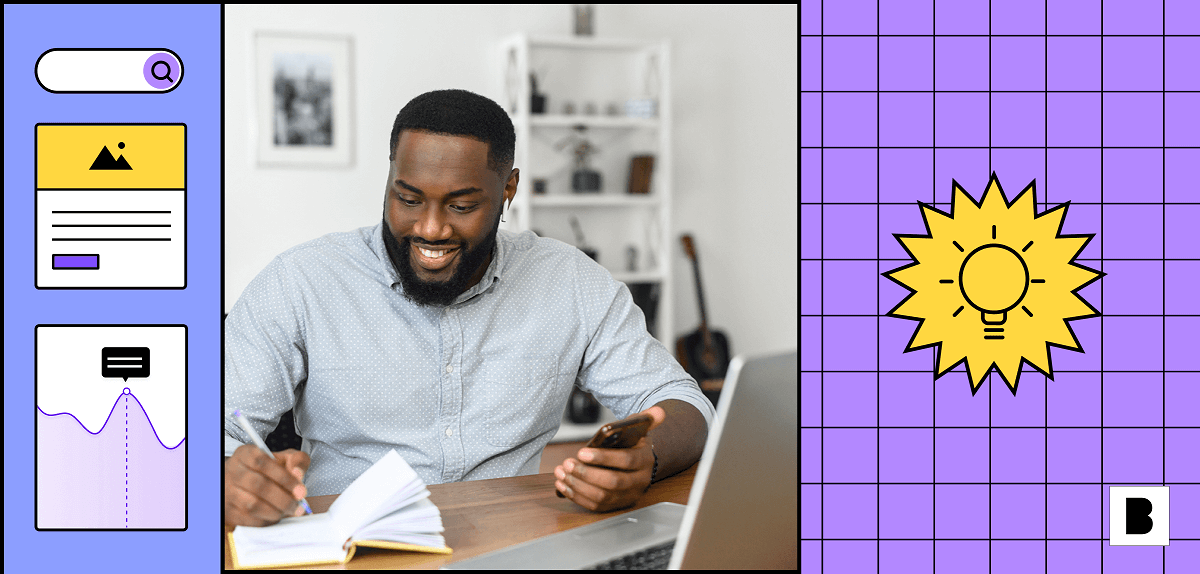

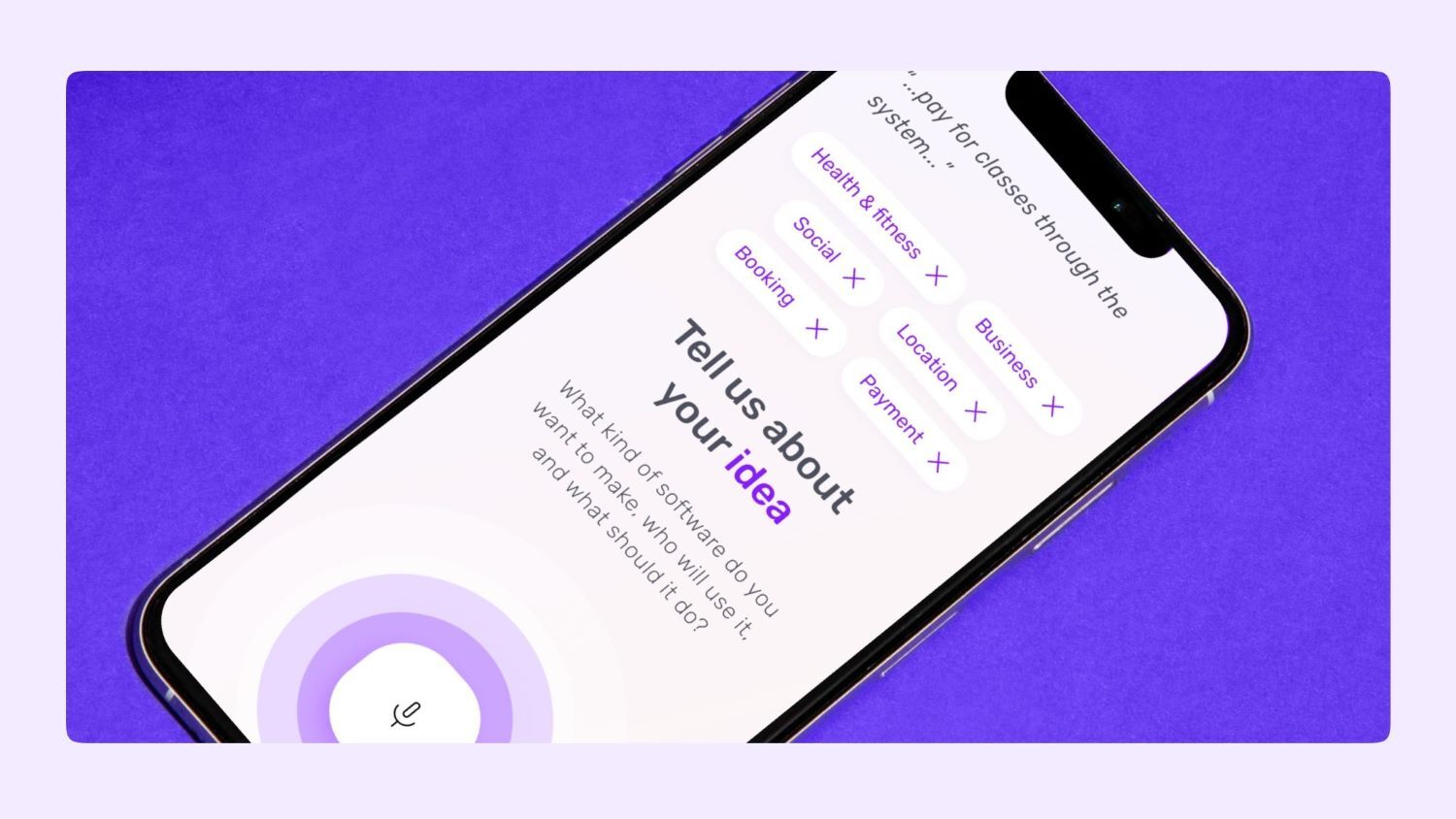









 Facebook
Facebook X
X LinkedIn
LinkedIn YouTube
YouTube Instagram
Instagram RSS
RSS


